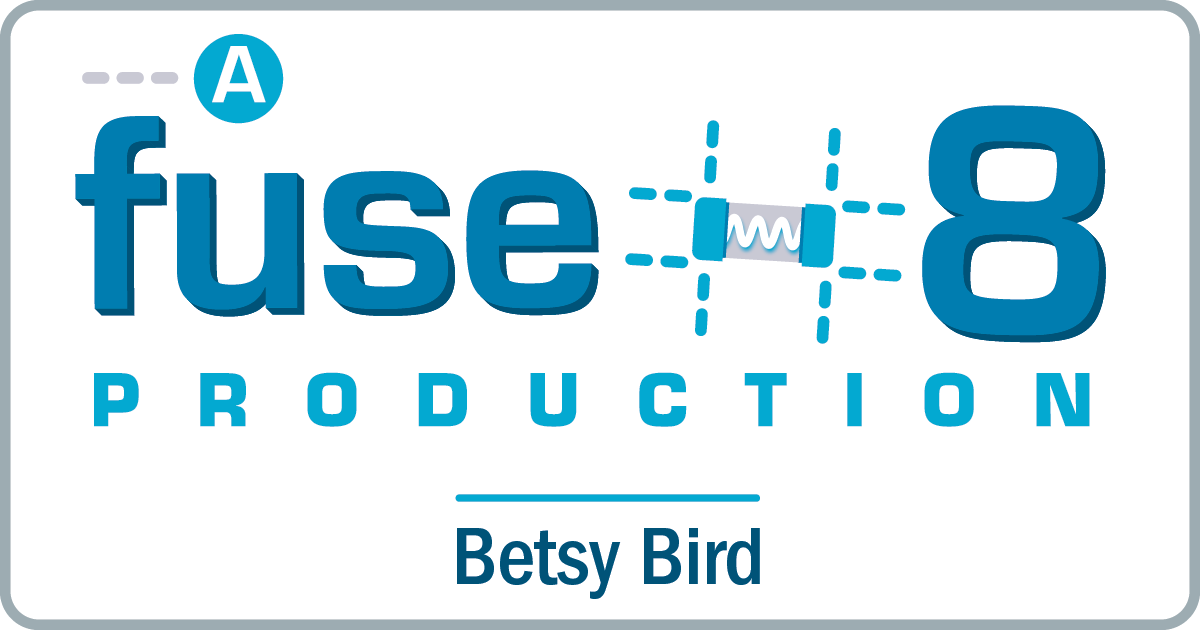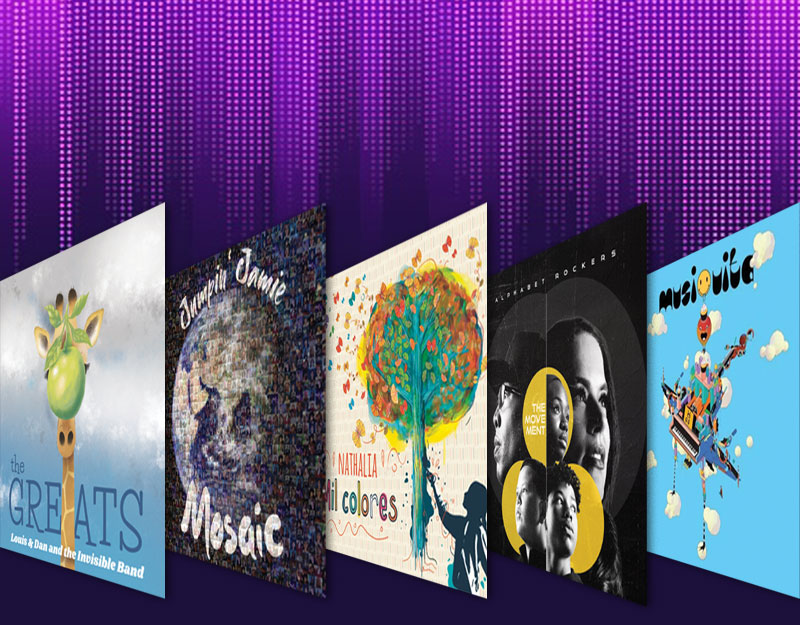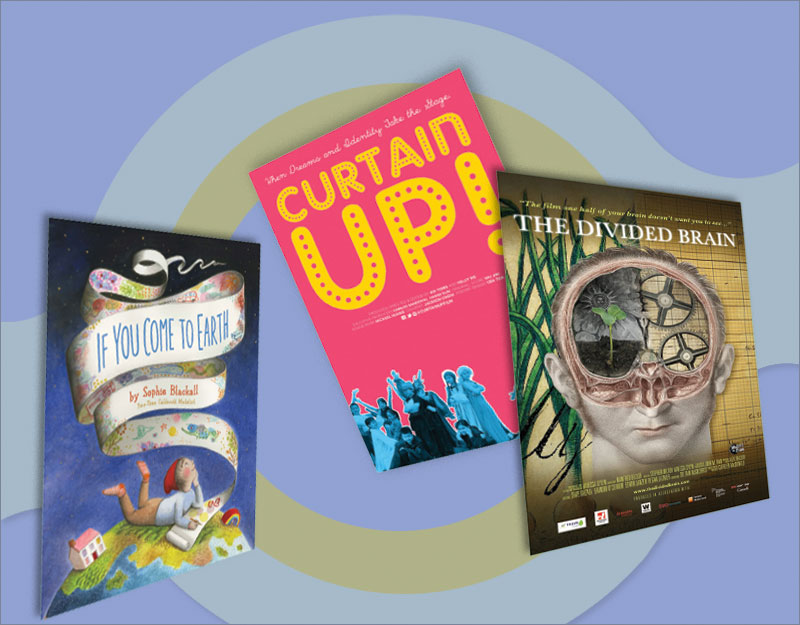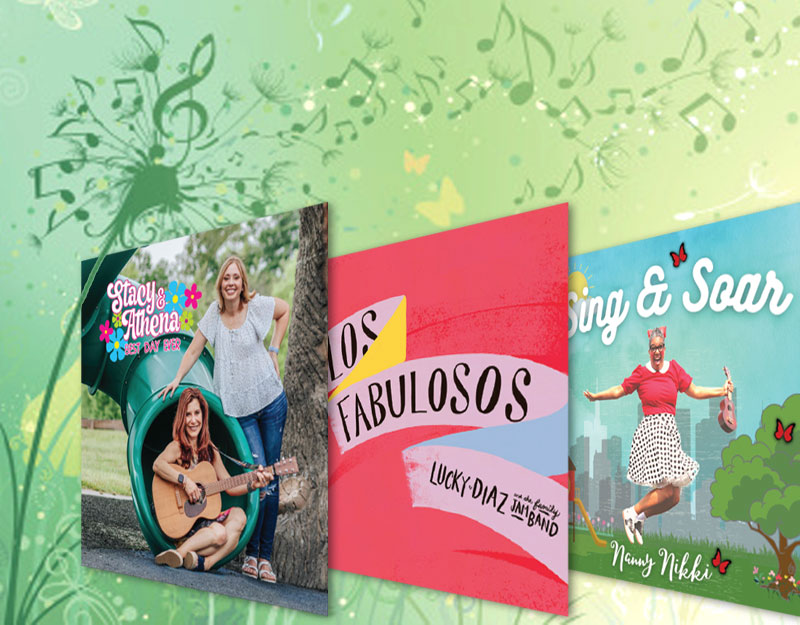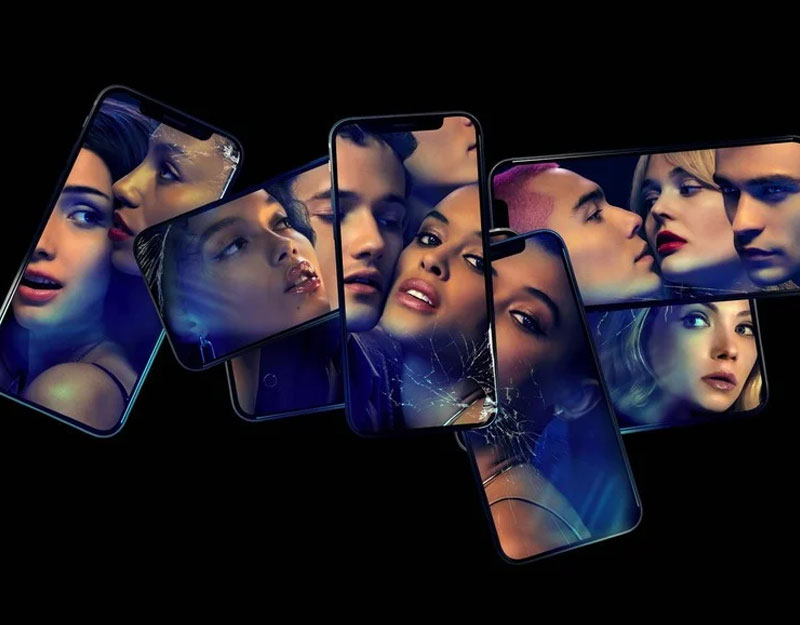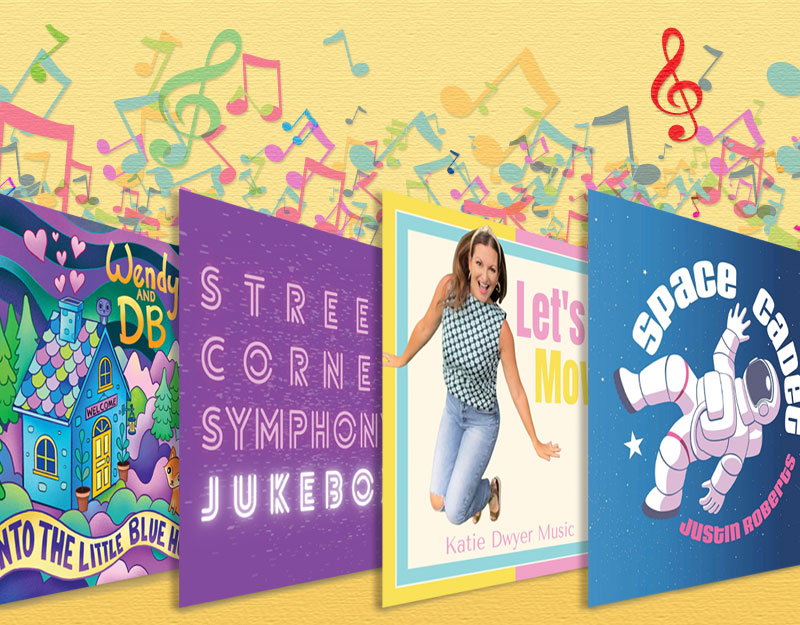Review of the Day: An Artist’s America
An Artist’s America
By Michael Albert
Henry Holt and Company
$17.95
ISBN: 978-0-8050-7857-2
Ages 5-10
On shelves April 29, 2008
Non-fiction Monday, yet again. Picture Book of the Day has the round-up.
Pop quiz, hotshot: Name me all the children’s autobiographies of artists you can think of: GO GO GO! Not biographies, mind you. Autobiographies. Actually, there are a couple out there, so let’s narrow it down a bit. Pop art. Name me all the books in which a Pop artist explains his or her artistic style to the kiddies. Oh, and see if you could also narrow it further down and find one that’s written for young kids, involves recycling, and shows the kids how they too can make art that looks just like what this famous artist has made on his own. Unless Jackson Pollock was indulging in children’s books on the sly (and let’s all enjoy THAT image for a moment or two, shall we?) the pickings are a bit slim. That’s why An Artist’s America, by Michael Albert is one of the more interesting art-related titles to shuffle onto the young reader scene. More inspiration than fact-laden history, the book serves to inspire young readers to make their own collage art from household items. The end result is a bizarre mix of corporate consumer culture, and good old-fashioned art projects that provides a lot of food for thought.
You may associate the Pop artist movement with the 1950s or 60s, but Michael Albert is young, Pop-inspired, and a master of the cardboard collage. Within a couple pages the artists shows how he started work as a child, fascinated by drawing on anything at hand and then later in college, brand names. Collage melded with the man’s Pop instincts until he started taking everyday objects like cereal boxes, cutting them apart, then rearranging them together into new forms. As we flip through the book we see his homage to Andy Warhol in the form of a rearranged Campbell’s Soup can. We see currency cut up and put back together and finally we see Albert start to put words and tableaus together. “The Last Supper” done with Toucan Sam? It’s “The Last Breakfast” now. How about a crazy/beautiful panel of slogans, all made out of recognizable collaged letters called “You Know What They Say”? In the end, Albert inspires readers to pull out the old scissors and start hacking up the boxes in our recycling bins firsthand. Back matter includes instructions on collaging and Art and Photo Credits.
ADVERTISEMENT
ADVERTISEMENT
 I have to admit that as someone who cringes every time an actor whips out a Pepsi can in a movie I had this momentary instantaneous cringe when I encountered familiar logo after familiar logo. You know that moment in the movie “Supersize Me” when the kids can identify Ronald McDonald but not Jesus? Yeah. So I felt a bit of that going through the book. But as it states clearly on the publication page, “The artist’s use of various logos and brands in the collages that are reproduced in this book is purely for the purpose of his own artistic expression, and such uses are not intended to suggest endorsement or sponsorship of those works of art, the artist, or this book by any company, organization, or owner of any brand.” Not entirely true when you consider that Mr. Albert is the founder of the Sir Real brand of organic juices and that their logo appears regularly in his work, but otherwise notable. Michael Albert is a Pop artist in the style of Andy Warhol. Campbell Soup didn’t pay Warhol anything for his reproductions of their cans, nor is Albert getting moolah for his Cheerios cut-ups. And though it hurts for me to say this, you’re going to get kids a lot more interested in a book about art if you show them all the crazy things you can do with the Trix Rabbit’s head than if Van Gogh were staring at them instead. I’m not saying it’s right. I’m just saying it’s true.
I have to admit that as someone who cringes every time an actor whips out a Pepsi can in a movie I had this momentary instantaneous cringe when I encountered familiar logo after familiar logo. You know that moment in the movie “Supersize Me” when the kids can identify Ronald McDonald but not Jesus? Yeah. So I felt a bit of that going through the book. But as it states clearly on the publication page, “The artist’s use of various logos and brands in the collages that are reproduced in this book is purely for the purpose of his own artistic expression, and such uses are not intended to suggest endorsement or sponsorship of those works of art, the artist, or this book by any company, organization, or owner of any brand.” Not entirely true when you consider that Mr. Albert is the founder of the Sir Real brand of organic juices and that their logo appears regularly in his work, but otherwise notable. Michael Albert is a Pop artist in the style of Andy Warhol. Campbell Soup didn’t pay Warhol anything for his reproductions of their cans, nor is Albert getting moolah for his Cheerios cut-ups. And though it hurts for me to say this, you’re going to get kids a lot more interested in a book about art if you show them all the crazy things you can do with the Trix Rabbit’s head than if Van Gogh were staring at them instead. I’m not saying it’s right. I’m just saying it’s true.
Actually, the whole format reminded me a lot of A Book About Design: Complicated Doesn’t Make It Good in its format. Both books have large fonts and a not exceedingly large amount of words on each page, considering the headiness of the subject matter. Both books also know how to convey an artistic style or sentiment in a way that’s kid-friendly and fun. At 48 pages, this book is a touch too long to be considered a picture book, but it’s ideal for kids that are comfortably reading early chapter books and need a little non-fiction to pad out their reading lists.
 It’s too bad that the author doesn’t fill out his little two-page sections a little more. For the section on his Sir Real brand of fruit juice he mentions that the logos (eyeballed fruits floating above suits, with bowler hats levitating at the top of the image) were inspired by the Surrealists. How much harder would it have been for him to mention that these pictures came directly from Magritte then? It would have taken less than half a sentence and could have clarified where his inspiration came from. Heck, he could even have included a little picture of Magritte’s “The Son of Man”. Why leave that out? If he had the wherewithal to discuss the issue of cutting up money (the legality meets with a hearty “who cares?” attitude on his part that I kind of enjoyed) then how much harder to mention one man’s name?
It’s too bad that the author doesn’t fill out his little two-page sections a little more. For the section on his Sir Real brand of fruit juice he mentions that the logos (eyeballed fruits floating above suits, with bowler hats levitating at the top of the image) were inspired by the Surrealists. How much harder would it have been for him to mention that these pictures came directly from Magritte then? It would have taken less than half a sentence and could have clarified where his inspiration came from. Heck, he could even have included a little picture of Magritte’s “The Son of Man”. Why leave that out? If he had the wherewithal to discuss the issue of cutting up money (the legality meets with a hearty “who cares?” attitude on his part that I kind of enjoyed) then how much harder to mention one man’s name?
We had a debate at my workplace about Mr. Albert’s intentions when we noticed a section in the back where he mentioned that he does workshops in schools n’ such. Was this a kind of self-promotion above and beyond the actual book itself? Looking at it, I think that section is there just to give Mr. Albert a bit of legitimacy in a sort of, “Hey, look I’ve actually done this with kids,” kind of way. He doesn’t include an e-mail or phone number where you can contact him and have him come to your school. What’s more, the section is immediately followed by a cool section called “How To Make Collages In My Style.” Any kid could read this and instantly know how to follow in the artist’s footsteps. Art teachers everywhere should consider this a definite addition to their school/personal collection then.

Yep. If I were to say it was like nothing you’d seen before I wouldn’t be lying. I’ll be intrigued to see if parents, teachers, and librarians that eschew consumer culture will see this book as something that will reinforce their children’s love of brand names, or will instead view the title as a way of tricking kids into loving art by luring them via familiar names and faces. Pop Art and children don’t mix very often. Whether Michael Albert succeeds in convincing the gatekeepers of this book’s use and authenticity remains to be seen. Still, I for one think it has some definite possibilities and earns its shelf space. Fascinating stuff to consider.
Notes On the Title Page: I think that this is the very first time I’ve ever wanted to draw any attention to a title page, but I gotta say that this is pretty darn cool. The page is an original piece of art, constructed entirely for the purposes of this book, and it doesn’t look as if Mr. Albert was able to find the words “Henry” and “Holt” in their entirety. What he DID find were the words “New” and “York”. And while I didn’t recognize the origins of the “New”, the “York” is definitely from a York Peppermint Pattie. Clever boy.
Filed under: Reviews
About Betsy Bird
Betsy Bird is currently the Collection Development Manager of the Evanston Public Library system and a former Materials Specialist for New York Public Library. She has served on Newbery, written for Horn Book, and has done other lovely little things that she'd love to tell you about but that she's sure you'd find more interesting to hear of in person. Her opinions are her own and do not reflect those of EPL, SLJ, or any of the other acronyms you might be able to name. Follow her on Twitter: @fuseeight.
ADVERTISEMENT
ADVERTISEMENT
SLJ Blog Network
One Star Review, Guess Who? (#202)
Exclusive: Giant Magical Otters Invade New Hex Vet Graphic Novel | News
Parsing Religion in Public Schools
Take Five: LGBTQIA+ Middle Grade Novels
ADVERTISEMENT

